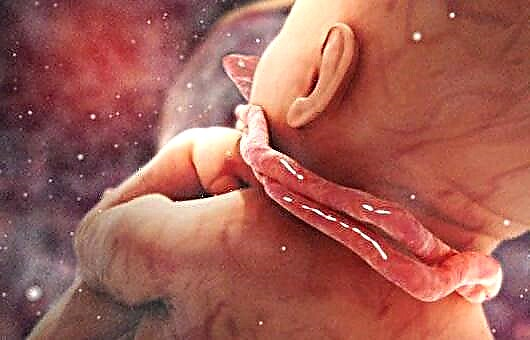Glucose control is just as important as other types of tests. For the result to be true, you need to know how to donate blood for sugar to a child. Improper preparation for the procedure will cause a false response and lead to an incorrect diagnosis.

Blood donation for sugar
What a blood sugar test shows
Systems in the human body will function poorly if they do not receive enough energy, the main source of which is carbohydrates. Cells produce a small amount of glucose, and food helps to fill its deficiency.
After eating, a reserve sugar, glycogen, is deposited in the liver. It is necessary for the normal functioning of organs, in particular, the brain, the clear functioning of the eye lens, the maintenance of muscle tissue in tone and the supply of lymph cells with energy.
There are blood glucose standards. The test results are compared with them, determining the degree of deviation in one direction or another. The quantitative indicator allows you to determine how well the metabolic processes in the body are adjusted, and whether the pancreas is coping with its duties.
It is she who ferments a special hormone that allows you to extract glucose from food and transport it into the blood. Insulin is produced in limited quantities and is not able to cope with excess sweets that have entered the digestive tract.
Note! An excess of sugar accumulates in adipose tissues, muscles, liver, which leads to disruption of the functioning of vital organs. Lack of glucose is also dangerous - it leads to carbohydrate starvation of cells.
Indications for research
It is advisable to regularly check the child's blood sugar level, taking tests at least once a year. An indication for an unscheduled test should be the following symptoms:
- the baby is inactive, crying, quickly gets tired of games;
- the child has dry skin and mucous membranes;
- wounds on the body heal slowly;
- acne and boils constantly appear;
- the child urinates excessively and is often thirsty.

Thirst is a symptom of high glucose
The deviation of the sugar level from the norm can affect the baby's eyesight, which is why the child often squints. Blood glucose should be monitored for heart problems, overweight, injuries, and even colds. These factors can influence the rise in blood sugar.
How to prepare a baby for the test
The glucose level is not constant - it is constantly changing. The indicators are influenced by food intake and fasting, physical activity, emotional state and other factors. Therefore, when going to the laboratory, it is important to know how to donate blood to a baby for sugar. A more believable result depends on the preparation of the baby for the procedure.
How many hours before the procedure you can not eat
Blood donation for sugar is carried out on an empty stomach. In this case, the last meal should be at least 8 hours before the procedure. For the smallest children on the eve, night feeding is excluded (after 24 hours).
In the morning, mother and child go to the laboratory to donate blood from a finger or vein. Only then the toddler is fed. If the baby is naughty during this period, he should be given clean non-carbonated water.
The restrictions also apply to a woman who is breastfeeding. The day before the procedure, she should not:
- drink alcohol;
- eating chocolate;
- smoking;
- take medications and contraceptives;
- chewing gum.
When it is unrealistic to exclude medications, then the baby is briefly transferred to milk formula. If an express test is planned, it is taken at any time of the day. No special preparation is required for this analysis.
Analysis
The most common research method for sugar is biochemical. To obtain a reliable indicator of glucose levels, it is enough to take a small amount of blood and conduct a clinical analysis.

Capillary blood collection
If the child's glucose is normal, the next procedure will be carried out no earlier than a year later. In case of deviations from the standard, the doctor will prescribe additional studies to make an accurate diagnosis:
- Glucose Tolerate Tests:
- with a load: first, he must give up on an empty stomach, then the child is given a sugar solution to drink and 2 more blood samples are taken at intervals of 2-3 hours;
- for C-peptides: a one-time blood sampling to determine the functional characteristics of insulin-producing cells.
- On glycated hemoglobin - it shows the level of glucose for the period of life of erythrocytes and allows you to identify the rudiments of diabetes in the early stages;
- For fructosamine - the fence is done on an empty stomach in case the child is already undergoing diabetes treatment;
- For lactate - allows you to determine the amount of lactic acid formed during the breakdown of glucose.
Not all of these tests are prescribed for babies. Sometimes, to confirm or refute the development of pathology, it is enough to take urine for a biochemical blood sample. Normally, children's urine (like an adult's) should not contain glucose.
Express method
This testing can be done independently at home. For this, it is enough to have a glucometer and special strips. The procedure requires compliance with sanitary standards and is carried out according to the following algorithm:
- mom (in medical gloves) treats the baby's ring finger of the left hand with a cotton swab soaked in alcohol;
- a sterile scarifier makes a puncture of the pad;
- squeezes a drop of blood onto the test strip;
- installs it into the meter.

Rapid blood control
After a couple of minutes, the device will give a result. As convenient as home monitoring of blood control is, it is not a substitute for laboratory testing. gives an inaccurate reading.
Child's blood sugar rate
There is a special table of norms for blood sugar in a child, which is used by laboratory assistants and doctors. In this case, the dependence of indicators on age is taken into account.
Glucose norm for children
| Age | Sugar level, mmol / l |
|---|---|
| Up to 2 years | 2,78-4,4 |
| From 2 to 6 years old | 3,3-5 |
| Students | 3,3-5,5 |
Having received the results of the analysis, the mother immediately checks whether they coincide with the proper standard or go beyond it. Deviations can be both up and down, so you should look for a reason.
Why are deviations of indicators possible?
If the baby is not properly prepared for testing, the result will be erroneous and may go beyond the limits indicated in the table. When the rules are met, and deviation is present, the following factors are considered:
- the rapid growth rate of the child's body affects the glucose level;
- if the family has diabetes patients, then the child may have an increase in blood sugar;
- when the baby eats unbalanced, there is a violation of carbohydrate metabolism;
- glucose will not meet the norms if the child develops obesity;
- distorting the results of the analysis can be transferred the day before or just beginning an infectious disease;
- if the baby was overly active or cried a lot for several hours of blood sampling, this will also affect the final indicator.

How sugar levels change
To understand what kind of pathology is present, the doctor pays attention to where the arrow has deviated: to a smaller or larger direction.
Low level
Glucose is an essential element for cell life. If the study gave a figure below the required level, they speak of hypoglycemia. In this case, the following problems can be assumed:
- the child has impaired liver function;
- there are difficulties with the pancreas;
- there is a suspicion of hypothyroidism (malfunction of the thyroid gland);
- at the time of analysis, toxins are present in the body.
Note! A lowered glucose level may indicate that the child is malnourished, and the body does not receive all the components necessary for development.
Increased sugar
Having found in the blood glucose in excess of the norm, first of all, diabetes mellitus is suspected. Here, as in the previous case, the influence of the following factors may also affect:
- development of pancreatitis;
- liver problems;
- endocrine pathology.
An elevated level sometimes indicates kidney disease. Even a banal reason can lead to such an indicator - eating a few hours before the tests.
Important! Whatever the test result, before the final diagnosis is made, the doctor should refer the child for consultation to narrow-profile specialists: endocrinologist, gastroenterologist, urologist, neurologist, etc.
A child's diet directly affects blood glucose levels. If the diet is unbalanced, the work of almost all organs is disrupted. Excess sweets lead to dysfunction of the pancreas and cause the development of diabetes.
Glucose deficiency impairs the functioning of the brain, negatively affecting the mental, mental and physical development of the child. Therefore, it is so important to timely donate blood for sugar, thereby controlling the health of your child (regardless of his age).



